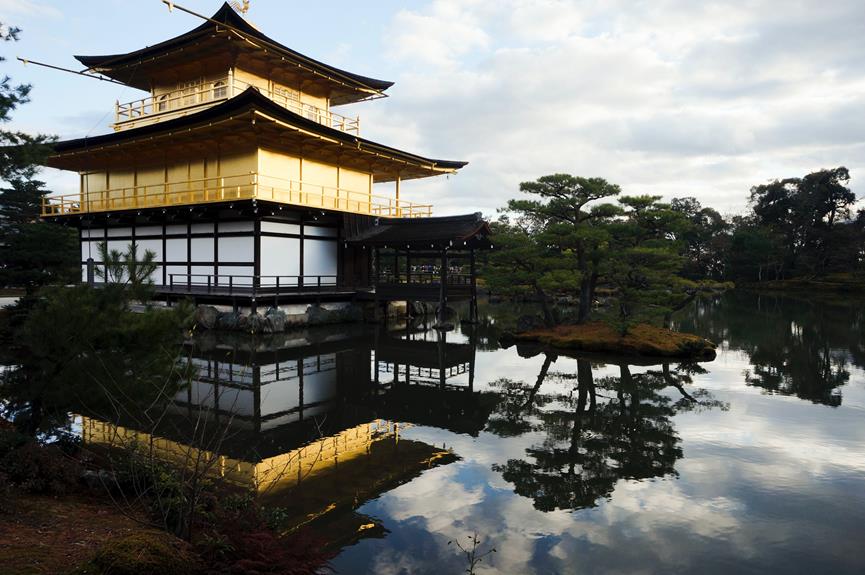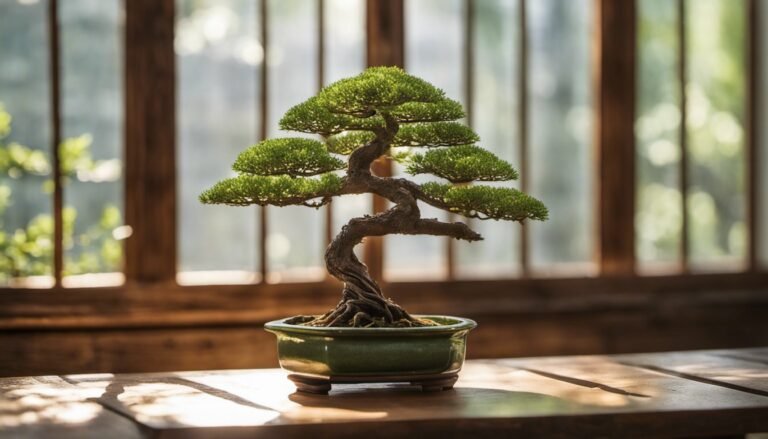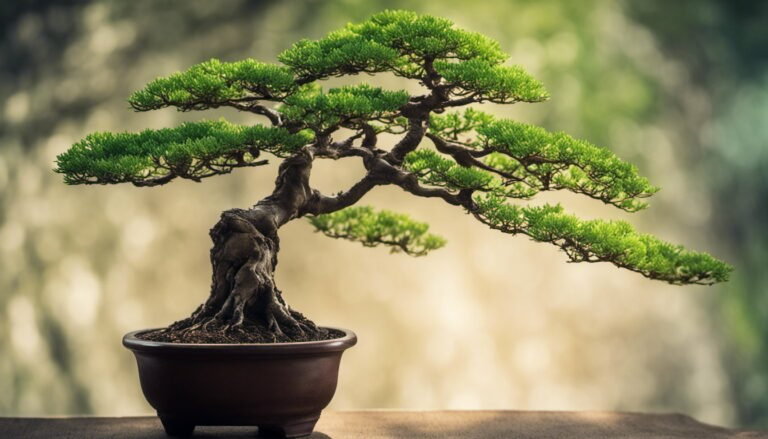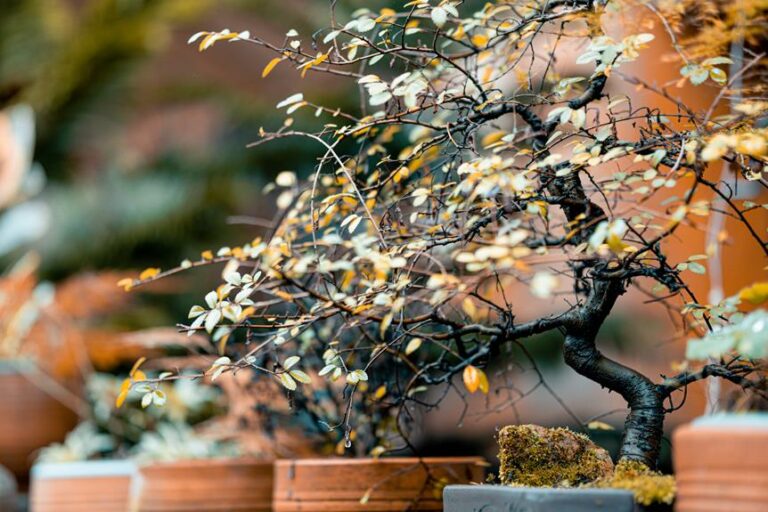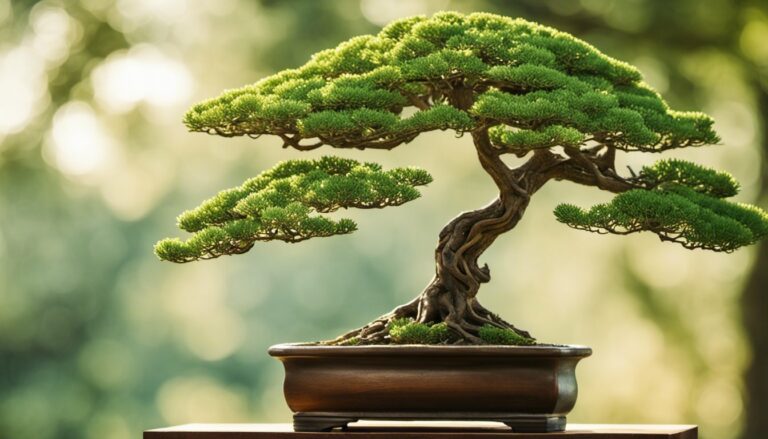Squirrels' Secret Appetite: Bonsai Trees Under Attack
Have you ever walked into your garden, only to find your beloved bonsai trees ravaged and damaged? It's a frustrating sight, isn't it? Well, brace yourself for the shocking truth – squirrels are the culprits behind these attacks!
These sneaky little creatures have a secret appetite for bonsai trees, nibbling away at their delicate branches and leaves. In this article, we will delve into the intriguing world of squirrels and their fondness for bonsai trees.
We'll uncover the reasons behind their destructive behavior and provide you with effective methods to protect your precious trees. So, if you're ready to outsmart these mischievous squirrels and safeguard your bonsai collection, read on to discover their secret appetite for bonsai trees.
Key Takeaways
- Squirrels have a tendency to eat and damage bonsai trees, particularly fruit-bearing ones.
- Smaller bonsai trees and those made from cuttings or seedlings are at higher risk of significant damage.
- Squirrels are more likely to target bonsai trees during fall and winter when other food sources are scarce.
- There are several methods to deter squirrels from bonsai trees, such as using strong odors, using a cage or decoy bird, covering a towel with apple cider vinegar, planting squirrel-repellent flowers, or keeping the bonsai tree indoors.
Squirrel Diet and Behavior
Squirrels have a voracious appetite for bonsai trees, devouring leaves, bark, seeds, nuts, and fruit that are common in these delicate plants. Fruit-bearing bonsai trees are particularly vulnerable to squirrel damage. Smaller bonsai trees and those made from cuttings or seedlings are at higher risk of significant damage.
Squirrels tend to eat bonsai trees during fall and winter when other food sources become scarce. To deter squirrels from attacking your bonsai, you can spray it with strong odors like pepper, garlic, peppermint, or peppermint oil. You can also use a cage or decoy bird to prevent squirrels from accessing your bonsai. Another option is to cover a towel with apple cider vinegar or use the urine or blood of a predator like a red fox or coyote near your bonsai tree.
Planting flowers that squirrels dislike, such as daffodils, hyacinths, lily of the valley, or galanthus, can also help protect your bonsai. Lastly, keeping your bonsai tree indoors can effectively prevent squirrel damage.
Methods to Deter Squirrels From Bonsai Trees
To protect your bonsai trees from squirrel damage, there are several effective methods you can use.
One option is to spray your bonsai tree with strong odors that squirrels dislike, such as pepper, garlic, peppermint, or peppermint oil.
Another method is to use a cage or decoy bird to prevent squirrels from accessing and attacking your bonsai.
You can also cover a towel with apple cider vinegar or use the urine or blood of a predator like a red fox or coyote near your bonsai tree.
Planting flowers that squirrels dislike, such as daffodils, hyacinths, lily of the valley, or galanthus, can also deter squirrels.
Lastly, keeping your bonsai tree indoors can protect it from squirrels, especially if it's a species that can thrive indoors.
Using Strong Odors as Squirrel Deterrents
To deter squirrels from eating and damaging your bonsai trees, you can use strong odors as a reliable method. Here are four ways you can use strong odors to keep those pesky squirrels away from your precious bonsai:
- Garlic, Pepper, and Peppermint Sprays: Spray your bonsai tree with mixtures of garlic, pepper, or peppermint oil to create a scent that squirrels find repulsive. These sprays not only deter squirrels but also act as a deterrent for other pests like insects.
- Apple Cider Vinegar: Soak a towel in apple cider vinegar and place it near your bonsai. The strong smell of the vinegar can repel squirrels for a few days.
- Predator Urine or Blood: Mix the urine or blood of a predator like a red fox or coyote with spoiled eggs or cream. Spray this mixture near your bonsai to create a foul smell that squirrels find unpleasant.
- Squirrel-Repellent Flowers: Planting flowers like daffodils, hyacinths, lily of the valley, or galanthus near your bonsai can scare or deter squirrels. These flowers not only add beauty to your display but also keep squirrels away.
Using Squirrel-Repellent Flowers
Planting flowers near your bonsai can effectively deter squirrels from attacking it. Certain flowers, such as daffodils, hyacinths, lily of the valley, and galanthus, have properties that squirrels dislike. These squirrel-repellent flowers can add beauty to your bonsai display while keeping the pesky critters away. Consider the seasonal availability of these plants when using them as a deterrent. To help you visualize the options, here is a table showcasing these squirrel-repellent flowers:
| Flower | Squirrel Repellent Properties | Seasonal Availability |
|---|---|---|
| Daffodils | Emit a strong odor | Spring |
| Hyacinths | Produce a powerful scent | Spring |
| Lily of the Valley | Emit a fragrance that squirrels dislike | Spring |
| Galanthus | Release a scent that deters squirrels | Winter |
Keeping Bonsai Trees Indoors
If you want to protect your bonsai tree from squirrel damage, bring it indoors. Keeping your bonsai tree indoors offers a reliable solution to keep those pesky squirrels at bay.
Here are four reasons why you should consider bringing your bonsai tree inside:
- Safety from squirrels: Moving your bonsai tree indoors ensures that squirrels won't be able to access and damage it. Squirrels rarely venture into indoor spaces, making it a secure option for protecting your bonsai.
- Maintain optimal conditions: By keeping your bonsai indoors, you can control the environment more effectively. You can provide the right amount of water and sunlight, ensuring that your bonsai thrives.
- Protection from the elements: Indoor environments shield your bonsai tree from extreme weather conditions such as strong winds, heavy rain, or frost. This protection helps maintain the health and longevity of your bonsai.
- Enjoyment year-round: Having your bonsai tree indoors allows you to appreciate its beauty and tranquility all year long. You can showcase it as a centerpiece in your living space, adding a touch of nature to your home.
Bringing your bonsai tree indoors not only keeps it safe from squirrel damage but also allows you to enjoy its beauty throughout the year.
Considering the Seasonal Availability of Squirrel Deterrents
Plan your squirrel deterrent strategy by considering the seasonal availability of effective plants and odors.
When it comes to planting squirrel-repellent flowers, it's important to consider the specific seasons when they're most effective. Flowers like daffodils, hyacinths, lily of the valley, and galanthus can scare or deter squirrels, but their effectiveness may vary throughout the year. These flowers tend to work best during spring or summer when they're in full bloom.
By planting them near your bonsai tree during these seasons, you can prevent squirrels from attacking it. Not only will these flowers keep squirrels away, but they'll also add beauty to your bonsai display.
Ensuring Proper Care for Bonsai Trees Indoors
To ensure the proper care of your bonsai trees indoors, you should consider moving them inside during the fall and winter seasons. When kept indoors, your bonsai trees will be protected from potential squirrel damage and will thrive in a controlled environment.
Here are four important tips to ensure the proper care of your bonsai trees indoors:
- Provide adequate water and sunlight: Place your bonsai near a window where it can receive sufficient sunlight. Water it regularly, making sure not to overwater or underwater.
- Maintain proper humidity levels: Bonsai trees thrive in environments with moderate humidity. Use a humidity tray or a humidifier to create the ideal moisture level for your bonsai.
- Monitor temperature fluctuations: Keep your bonsai away from drafty areas or extreme temperature changes. Maintain a consistent temperature to promote healthy growth.
- Prune and trim regularly: Indoor bonsai trees may require more frequent pruning and trimming to maintain their shape and size. Regular maintenance will help your bonsai stay healthy and aesthetically pleasing.
Conclusion
In conclusion, it's clear that squirrels pose a significant threat to bonsai trees, causing damage to their delicate structures.
However, there are effective methods to deter these mischievous creatures. Using strong odors as deterrents and planting squirrel-repellent flowers can help keep them at bay.
Additionally, considering the seasonal availability of these deterrents and keeping bonsai trees indoors can provide further protection.
By implementing these strategies and ensuring proper care, bonsai enthusiasts can safeguard their precious trees from the secret appetite of squirrels.

